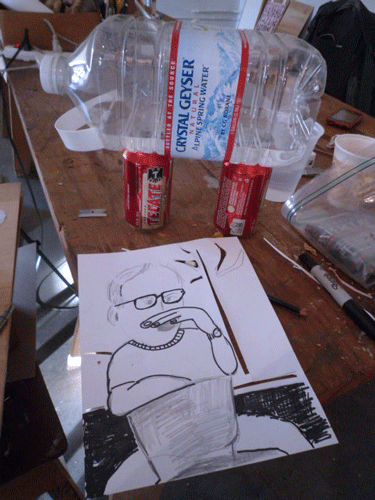March 30, 2010
It?s Not Dry Yet

Roberta Smith weighed in with a recent article, It?s Not Dry Yet. It's well worth reading in its entirety, but here are the my favorite bits clipped for a little... bit of concision in this blogpost:
FEW modern myths about art have been as persistent or as annoying as the so-called death of painting. Unless, of course, it is the belief that abstract and representational painting are oil and water, never to meet as one.The two notions are related. The Modernist insistence on the separation of representation and abstraction robbed painting of essential vitality. Both notions have their well-known advocates. And both, in my mind seem, well, very 20th century.
Pictorial communication ? signs, symbols, images and colors on a flat surface ? is one of the oldest and richest of human inventions, like writing or music. It started on rocks and the surfaces of clay pots and in the woven threads of textiles, then moved to walls, wood panels, copper and canvas. It now includes plasma screens, Photoshop and graphic novels. Even so, paint on a portable surface remains one of the most efficient and intimate means of self-expression.
As for representation and abstraction, historically and perceptually they have usually been inseparable. Paintings ? like all art ? tend to get and hold our attention through their abstract, or formal, energy. But even abstract paintings have representational qualities; the human brain cannot help but impart meaning to form.
There have been moments of dazzling balance between the representational and the abstract ? for example, Byzantine mosaics; pre-Columbian and American Indian textiles and ceramics; Japanese screens; Mughal painting; and post-Impressionism.
Painting may be in a similar place right now, fomented mostly, but not always, by young painters who have emerged in the last decade. They feel freer to paint what they want than at any time since the 1930s, or maybe even the 1890s, when post-Impressionism was at its height....
...But what really is questionable, and pass?, is the implied ranking of art mediums and the leaving of some of them for dead. None of them ever really, ultimately have much of a monopoly on quality. And something else greatly reduces the chances of the death of painting: too many people ? most obviously women ? are just beginning to make their mark with the medium and are becoming active in its public dialogue.
I'm proud to report that my good friend Henry Taylor was included in the slide show that accompanies the article. He was in New York recently, and after returning today he stopped by my studio. As he is wont to do, he drew and assemblaged a bit while we talked. A foto of his shenanigans graces the top of this post.
Posted by Dennis at March 30, 2010 4:46 PM
Leave a comment